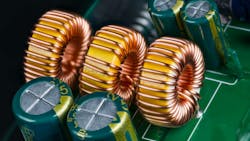Shedding Light on Little-Known Power-Density Applications (Download)
Simply put, power density is a quantity that can output large amounts of energy based on its volume. Here’s a simple example:
A small capacitor could have the same power output as a large battery. Since the capacitor is far smaller, it will have a higher power density because it can release energy very quickly. High-power-density systems also have the capability to recharge quite fast.
